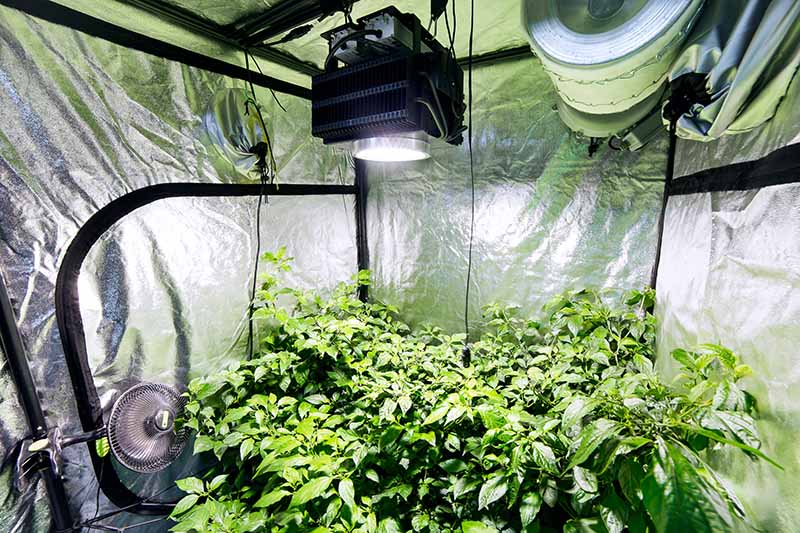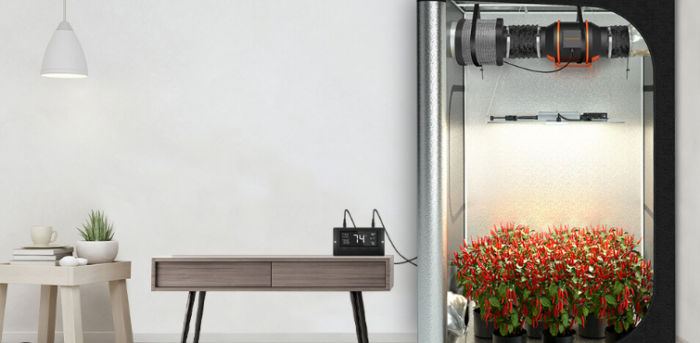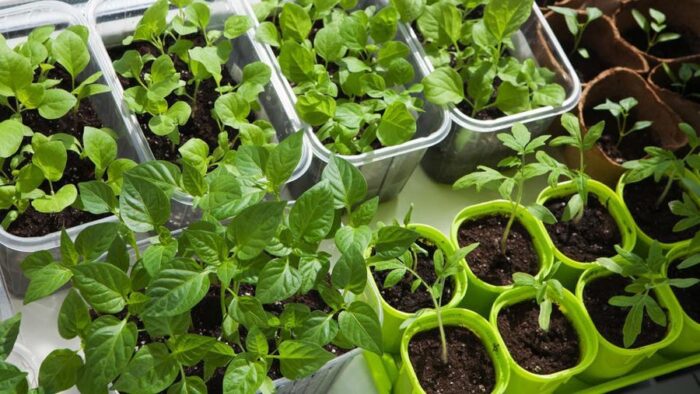
If you’re planning to grow plants indoors you might be interested in using a grow tent to grow your plants. This is because grow tents have a greater capacity to grow a wider variety of plants while also providing a safe environment for them to grow in. But if you think about a grow tent you’ll naturally see that they are a contained box, which is both a benefit and a drawback: a benefit because it controls what enters and exits, including pests and diseases, and a drawback because it limits airflow meaning you can get some very stagnant air in that space, which is very unhealthy for a plant.
That said, there is definitely a way to address this, and easier than you might imagine. We solve this problem with an inline duct fan. An inline duct fan is an essential component of a grow tent setup. It is a type of fan that is installed in-line with the ventilation ducts to help circulate air in and out of the grow tent. The fan works by drawing in air from outside the tent and pushing it through a carbon filter, which removes any odors or impurities. The clean air is then circulated through the tent and over the plants, which helps to promote healthy growth and development. The fan also helps to regulate temperature and humidity levels within the tent, which is critical for maintaining optimal growing conditions. Additionally, inline duct fans can be used to control the amount of fresh air that is introduced into the tent, which can be important for plants that require specific levels of CO2 to thrive. Overall, an inline duct fan is an essential tool for anyone who is serious about indoor gardening and wants to create a controlled environment for their plants to grow and thrive.
Yet, there are more powerful inline duct fans than just a simple one that is used for blowing air. Products like the VIVOSUN AeroZesh are perfect examples: they are automatic versions of these inline duct fans. An automated inline duct fan is a type of fan with advanced controls and sensors that allow it to operate automatically based on pre-set parameters. These fans are designed to provide a more precise level of control over ventilation and air circulation within a grow tent or indoor garden.
Automated inline duct fans typically come with a range of features, such as timers, thermostats, and humidity sensors, which allow growers to customize the fan’s operation based on the needs of their plants. For example, the fan may be programmed to turn on when the temperature or humidity levels within the tent reach a certain threshold, or it may be set to run on a specific schedule. Some automated inline duct fans also come with speed controllers, which allow growers to adjust the fan’s speed to achieve optimal airflow without creating too much noise or using too much energy.
Overall, automated inline duct fans are a useful tool for indoor gardeners who want to create a more efficient and precise growing environment for their plants. By automating the ventilation process, growers can ensure that their plants receive the right amount of fresh air, temperature, and humidity levels to thrive, while minimizing the amount of manual intervention required.
What Are the Advantages of Using an Automated Inline Duct Fan?
There are several advantages of using an automated inline duct fan in an indoor garden or in a grow tent. Let’s take a look at a few:
- Precision control: An automated inline duct fan allows for precise control over air circulation and ventilation. With the help of advanced sensors and controls, growers can program the fan to turn on or off based on pre-set parameters, such as temperature or humidity levels, ensuring that the plants receive the optimal growing conditions.
- Energy efficiency: Automated inline duct fans are designed to operate only when needed, which can help reduce energy consumption and lower electricity bills. By optimizing the use of the fan, growers can create a more sustainable and cost-effective growing environment.
- Convenience: With an automated inline duct fan, growers can set it and forget it. Once the fan is programmed, it will operate automatically, requiring minimal manual intervention. This frees up time and energy for other tasks, such as watering, pruning, or harvesting.
- Improved plant health: Proper air circulation and ventilation are critical for the health and growth of plants. An automated inline duct fan ensures that the plants receive a steady supply of fresh air, which can help prevent the buildup of harmful gases and toxins that can stunt growth or cause damage.
What Are the Disadvantages of Using an Automated Duct Fan?

There are several disadvantages of using an automated inline duct fan but they do not differ greatly from using a manual adjusting inline duct fan.
- Noise: Depending on the size and power of the fan, it can be quite loud when operating at higher speeds. This can be disruptive for growers who are working in the same room as the grow tent or for those who live in shared spaces.
- Cost: Inline duct fans can be expensive, especially if you opt for a larger or more powerful model. Additionally, you may need to purchase additional components, such as ducting, clamps, or carbon filters, which can add to the overall cost.
- Installation: Setting up an inline duct fan can be a bit complicated, especially for growers who are new to indoor gardening. You may need to install ducting, cut holes in the tent, and connect the fan to a power source. This can be time-consuming and require some DIY skills.
- Maintenance: Inline duct fans require regular maintenance to keep them functioning properly. This may include cleaning the fan blades, replacing filters, and inspecting the ducting for damage or blockages. Neglecting maintenance can lead to decreased performance or even failure of the fan.
Overall, automatic inline duct fans are extremely useful and capable of creating the perfect growing enviornment for your palnts. What makes them so powerful is that they automatically react to your tent’s environment without you having to spend time measuring and adjusting the functions. Even more, the fans work in tandem with your other growing equipment – LEDs, circulation fans, or whatever smart devices you might run in your tent can all be connected together to create the ideal environment for your needs.









